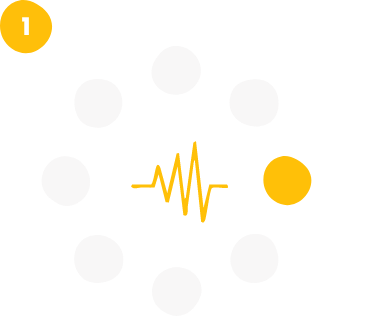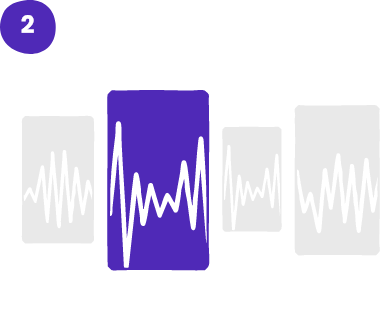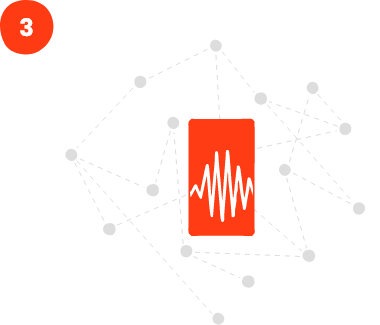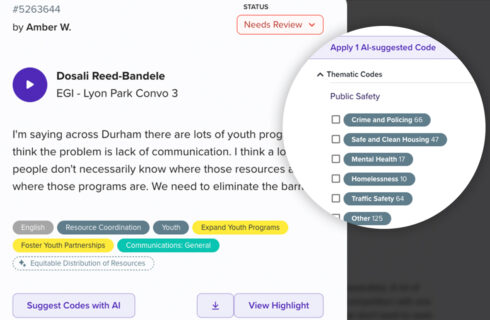


Start with a good conversation – sharing personal stories in small groups. These conversations are recorded, with audio and transcriptions automatically generated.

Surface patterns across conversations through “sensemaking” – a systematic listening process led by people and supported by AI tools.

Share media outputs that incorporate real voices and data-driven insights to build understanding grounded in listening.
How? A unique aspect of Cortico is the conversation record – a combination of audio and transcripts automatically created and shared back with participants. This enables the curation of key moments that can be played back in audio snippets – as well as aggregate analysis or “sensemaking” to identify patterns or connections across many small-group conversations.
Cortico conversations boil down to three simple steps:
It’s Cortico’s unique audio, transcript, and AI tools that make 2. and 3. possible.
That’s how Cortico gets the best of both worlds: small-group discussion – quality conversation, personable interactions – as well as aggregate, retrospective analysis.
Joanna shares her experience interacting with the U.S. Education System
This conversation highlight comes from our project with Carnegie Corporation of New York
Cortico’s AI is human-steered—no pushbutton shortcuts. Our tools ensure insights stay grounded in real voices and local knowledge. Unlike AI that digests and summarizes human speech, Cortico’s voice-first, people-led approach helps communities surface, share, and act on their own narratives.
Anyone can be a sensemaker. We use AI not just to make sensemaking easier, but also to make conversation analysis accessible to anyone without extensive training. By positioning users as active participants in sensemaking, this approach signals a transition from conventional analysis methods to community-powered understanding.

The collaboration between Cortico and MIT Center for Constructive Communication powers advanced research and prototypes that enable advances in Cortico’s platform.
